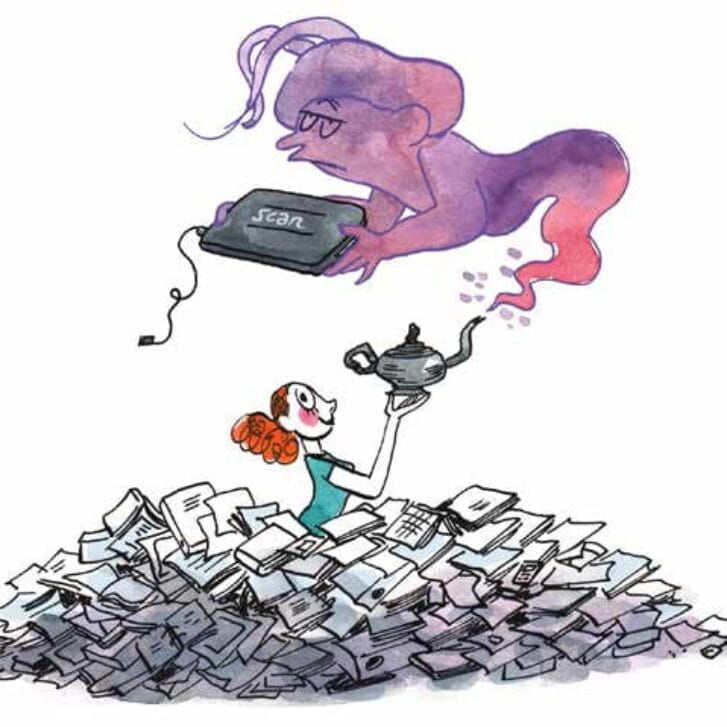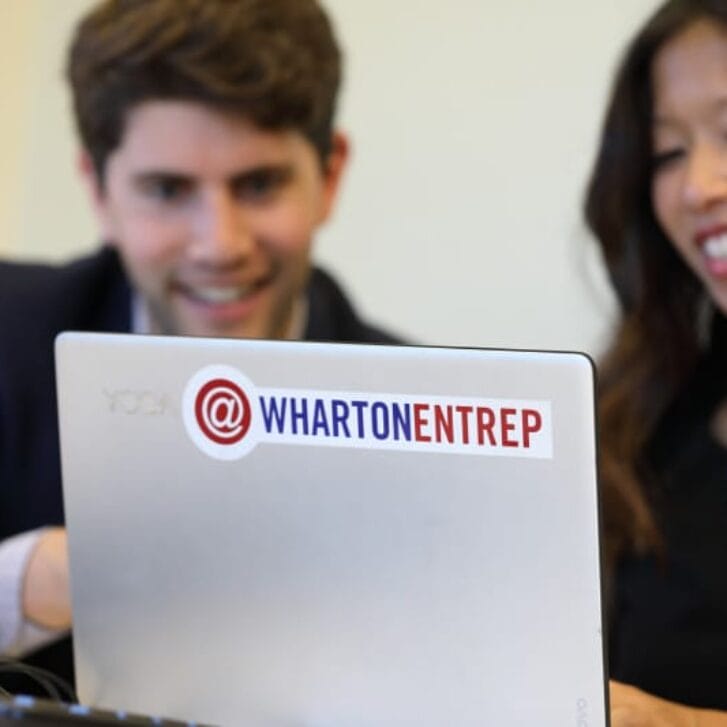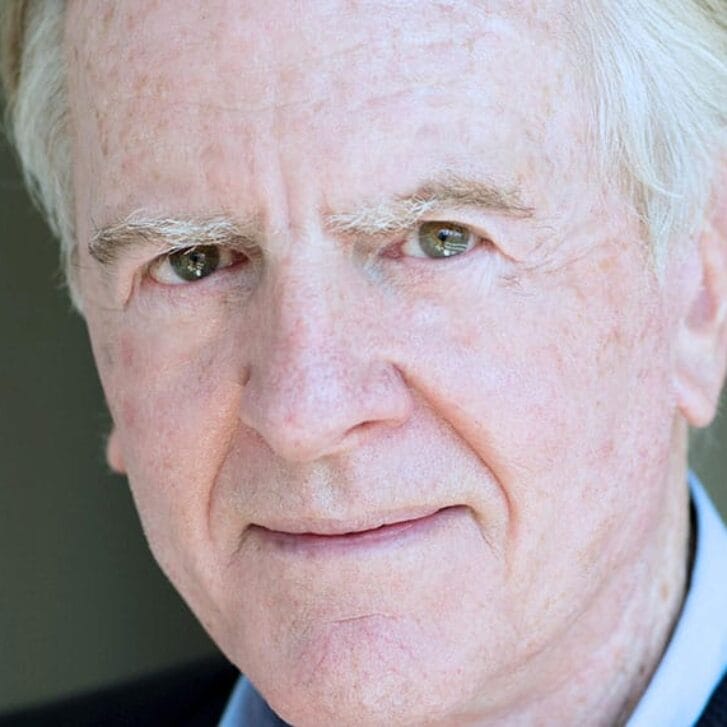John Foye and Ryan Marschang are changing the way the world sees solar-power-generating windows—or, at least, the way the world sees through solar-power-generating windows.
In collaboration with two doctoral candidates from the Massachusetts Institute of Technology, the Penn seniors established Invisergy, a company that has developed a cost-effective, solar-energy-generating window that maintains the high transparency and aesthetic appeal of a standard window.
“That our windows generate energy while maintaining transparency is a breakthrough in the smart window or solar window space,” says Marschang, who like his partner is a candidate for dual Wharton and engineering degrees.
Helping Invisergy is the Wharton Innovation Fund.
The Wharton Innovation Fund was established in the fall of 2011 with a founding gift by Alberto Vitale, WG’59. Through the fund, Wharton seeks to stimulate the creativity and inventiveness of students across the University of Pennsylvania and support the early development of their ideas and inventions by providing direct grant funding. Grants start at $1,000, and applicants can receive up to $5,000 in funding if they meet benchmarks set forth by the Innovation Fund. About $125,000 is available each year. Projects may begin in the classroom or be developed independently.
“Really, a business school is a conduit for creativity,” says Vitale, former CEO of Random House. “At Wharton and Penn, young people have a tremendous amount of initiative. The possibility of fostering that creativity in a practical way and allowing students to have ideas and expand them at the initial stages is very appealing.”
Engineers Go to Market
As a project that ties engineering and green-tech innovation into a business, Invisergy has benefited from resources across Penn—from the Wharton Venture Initiation Program to the Weiss House Innovation Fund—but Marschang says that the grant from the Wharton Innovation Fund will be invaluable in helping the company focus on developing the business more holistically.
“We have a pretty good functioning prototype and we’re developing technically, but we really want to build our business in terms of marketing, getting a website together, maybe putting together some sort of promotional video—things will be pretty important for helping our customers visualize what we expect this to look like,” he says. “Right now, we’re more tech heavy than our actual business, so we want to bring that full circle and develop more of the business side of it.”
Invisergy’s solar-power-generating windows are currently geared toward office buildings. Consider the fact that a standard 15-floor commercial building typically has an envelope largely composed of glass. According to Foye, who is also pursuing a graduate engineering degree, Invisergy’s windows could provide about 5 percent to 10 percent of these buildings’ electrical load. In conjunction with rooftop solar panels and other green technologies, owners and occupiers could see significant reduction in energy cost—while having a positive environmental impact to boot.
“Currently, buildings consume over 70 percent of all the electricity in the United States, yet produce basically zero percent of their electrical load requirement,” Marschang says. “We want to change that.”
The Political Matchmaker
Established by Keya Dannenbaum, ElectNext is another organization that received grant support from the Wharton Innovation Fund. The web platform works as a political educational tool and matchmaker, connecting voters with the candidate who best represents their beliefs and values.
Users complete a survey of at least 10 questions to determine a candidate match. The online survey adapts each question based on the user’s previous responses, ensuring an experience that is unique to each voter.
Dannenbaum launched the project and put her Wharton MBA on hold to focus on its development. She conceptualized the first iteration of ElectNext during a modular course on innovation at Wharton | San Francisco with Karl Ulrich, the CIBC Professor of Entrepreneurship and eCommerce. Through the course, she was able not only to develop her idea, but also leverage support from Wharton Computing to create a rudimentary website, which allowed her to implement the idea and receive feedback from users.
“It gave me the confidence to say, ‘OK, I came to Wharton to be an entrepreneur, I have an idea that seems to have legs, and I have history and experience in the industry, so let’s run with it,’” she says.
When she returned to Philadelphia, she partnered with a Penn doctoral candidate proficient in web coding and development and began leveraging the entrepreneurial resources available at the School. The pair worked with faculty members in Wharton’s Statistics Department to refine the matching algorithm and earned acceptance in the Venture Initiation Program, the educational incubator managed by Wharton Entrepreneurial Programs. When ElectNext received a grant from the Wharton Innovation Fund last November—the same month that the newest iteration of site launched—the money represented about 20 percent of its funding. Dannenbaum counts it as a critical factor in helping her company of two grow to an organization of five.
As of April, ElectNext had received about 60,000 unique views. As the 2012 presidential election approaches, Dannenbaum anticipates that this number will increase dramatically. ElectNext is working on establishing media partnerships, particularly with online political publishers, so that the site can be integrated into coverage of the election.
The staff methodically collects, categorizes and structures data on issues, candidates and elections, which power the matchmaking—and fund the company. ElectNext generates revenue by providing licensed access to its data to such organizations as media outlets, educational organizations, larger data companies and even Philadelphia’s National Constitution Center. While several nonprofits have attempted to collect and house political data and numerous tech startups have come to the forefront to tie politics with social media, Dannenbaum says, ElectNext is different.
“We go out and actually structure data on elections and on districts and on issues and on candidates and where they stand on issues,” she says. “In order for us to connect users to that, we have to do a whole lot of heavy lifting on the backend data piece. That is really a primary difference between ElectNext and anything else out there.”
The organization has already collected data on politicians and topics at the federal level and plans to create a database for state-level politicians. The company has also received requests for international expansion into Canada, Australia, Israel, India and Argentina, just to name a few.
“We joke that we’d love to have an ElectNext world headquarters in Sydney and Paris and Mumbai, so that’s on the back of our minds,” says Dannenbaum.
The Fund’s Future
ElectNext and Invisergy are just two of the 14 ventures that have received grant support in the short amount of time since the fund was established. The other student-developed companies range from an online course engagement system to a device that provides accessible and affordable hearing aids to the 35 million Americans suffering from hearing loss. Applicants must meet two criteria to be eligible for funding: the product must be a new service or new application of existing technology, and the problem addressed must be big enough for opportunity to scale.
“The fund helps develop a pipeline of projects and entrepreneurial activity on campus,” says Don Huesman, managing director of Wharton’s Innovation Group. “As students demonstrate the strength of their idea and their own passion in making it a reality, additional support can be provided.”
That support might come in the form of additional grants from the fund or support of the Venture Initiation Program and other entrepreneurial programs on campus.
The more student startups to which Wharton provides funding, the more likely the School is to fuel success stories.
The concept is based on the scholarly work that Ulrich, who also serves as vice dean of innovation, has done on innovation tournaments. Within organizations, one way to achieve innovation success is the solicitation of numerous ideas from a diverse pool of individuals. Over time, these ideas are filtered down to a few exceptional ideas that can have a significant impact.
Vitale alludes to Ulrich’s scholarly work when revealing his long-term hope for the fund.
“Let’s say we support 20 to 25 ideas every year—give or take a few—over five years,” he says. “Statistically, it stands to reason that three, four or five ideas will have real meaning, have real potential, and the fact that we are able to service that potential and help those ideas to develop is terrific.”
Beyond providing grants for student projects that could become the next exceptional idea, the fund also provides assistance to course-assigned team projects so that students can apply what they have learned in the classroom to problems beyond coursework. In addition, the fund supports initiatives and ventures that build upon and commercialize the School’s innovations, technologies or intellectual property that showcase Wharton thought leadership. These may involve students, faculty and staff.
“With this fund, Wharton has institutionalized the idea of allowing good ideas to develop within an academic environment,” says Vitale. “Penn has bright students, students who not only want to study and get a degree and do well at school, but who have entrepreneurial urges that should be supported.”


























